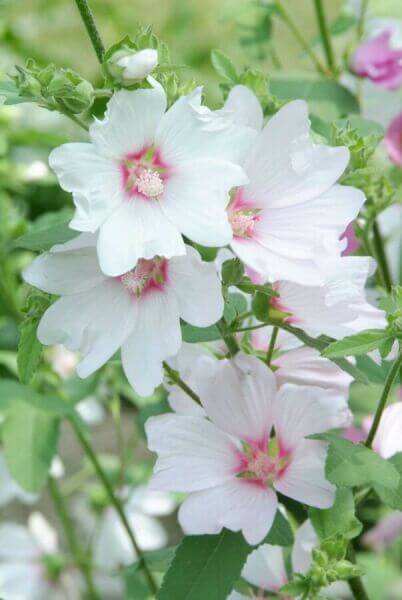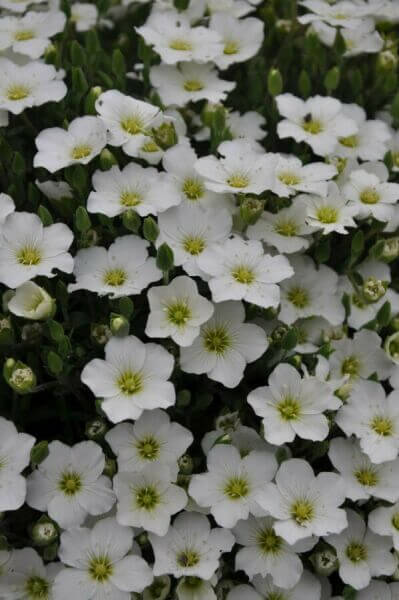Hedge Plants For Innovative Gardens
Hedge Plants For Innovative Gardens
Blog Article
Hedge Plants For Garden Design
Boost your garden's attraction with lavish hedge ranges such as Yew (Taxus), Thuja, Laurel, Photinia, and Bamboo, celebrated for their structural integrity and ecological benefits.
Yew and Thuja provide evergreen coverage and winter durability, while Laurel uses rapid development and broad, aromatic leaves.
Photinia adds seasonal appeal with its lively red foliage, and Bamboo lends a low-maintenance, peaceful atmosphere.
These hedges improve air quality, minimize sound, and create tranquil, private areas.
Correct planting, spacing, and maintenance guarantee energetic development and ecological harmony.
Check out how these lavish ranges can elevate your garden's charm and well-being.
Secret Takeaways
Change Your Garden With Lush Hedge Ranges
- Select Yew for its dense, evergreen growth and exceptional durability.
- Select Laurel for its fast development and broad leaves, ensuring fast privacy.
- Select Photinia for its vibrant seasonal foliage, which turns a striking dark red.
- Use Bamboo for a low-maintenance, winter-hardy hedge with visual appeal.
- Space plants 2-3 per meter and prune frequently for optimal development and health.
Popular Hedge Plants
When changing a garden with rich hedge ranges, it's vital to think about popular hedge plants such as Yew, Thuja, Laurel, and Photinia due to their special characteristics and benefits.
Yew (Taxus) is extremely respected for its durability and thick, green development, making it a prime option for withstanding landscapes.
Thuja is noted for its evergreen foliage and robust winter resilience.
Photinia adds seasonal vibrancy with red leaves that darken over time, creating dynamic visual appeal.
Laurel offers quick development and aromatic, broad leaves, suitable for quick privacy.
Additionally, Bamboo is an exceptional option for atmosphere, providing a low-maintenance, winter-hardy option that enhances the garden's visual with its sophisticated, swaying walking sticks.
These selections cater to a range of horticultural needs and preferences.
Advantages of Garden Hedges
Garden hedges use a wide variety of benefits, making them a valuable addition to any landscape. These natural barriers are cost-efficient to execute and provide substantial wind security, improving air circulation and adding to noise decrease. The dense foliage of hedges like Thuja and Beech ensures personal privacy by obstructing presence, producing a serene and remote environment.
Hedges likewise play a vital function in microclimate regulation, supplying a stable environment that fosters plant development and minimizes temperature level changes. Their detailed leaf structures filter contaminants, enhancing air quality and contributing to a much healthier garden community.
Additionally, hedges master sound decrease, taking in and deflecting acoustic waves to lower ambient noise levels. This double performance of offering both acoustic and visual privacy boosts the overall serenity and visual appeal of any garden.
Planting and Maintenance Tips
For an effective hedge, careful preparation of the planting area is important. Ensure the soil has appropriate pH and drain to support strong root development.
Space the plants properly for the selected types. Water the hedge frequently during its preliminary development stage, adjusting as needed with seasonal modifications.
Carry out a systematic pest control and disease avoidance method, using organic or chemical treatments when needed. Frequently check for aphids, mites, and fungal infections.
Apply mulch to retain moisture and reduce weeds. Seasonal pruning promotes thick development and air blood circulation, essential for plant health.
Following these guidelines will help you cultivate a dynamic, well-kept hedge that improves the charm of your garden.
Spacing and Cutting Standards
Spacing and Cutting Standards
Correct spacing and cutting are vital for cultivating healthy, aesthetically appealing hedges. Appropriate spacing makes sure each plant gets enough nutrients, light, and air flow.
Follow these standards for optimum hedge upkeep:
- Spacing: Position hedge plants 2-3 plants per meter to motivate robust growth.
- Pruning Methods: Regular pruning is important for maintaining desired hedge height and shape. Trim brand-new development in summertime and cut back older wood during winter.
- Seasonal Care: Change cutting techniques and schedules according to seasonal requirements to guarantee plant health.
- Hedge Height: Regularly monitor and cut to keep the preferred hedge height and achieve uniform aesthetics.
Following these actions will guarantee your hedge flourishes, enhancing both the appeal and performance of your garden.
Selecting the Right Hedge
Selecting the Right Hedge
Selecting the proper hedge involves evaluating aspects such as mature height, foliage density, and ecological durability. Successful hedge plant choice requires comprehending each species' development characteristics and site-specific adaptability.
For example, Yew (Taxus) uses outstanding longevity and thick development, while Thuja is notable for its winter season durability. Additionally, thinking about maintenance requirements is important; fast-growing species like Laurel or Privet need regular cutting, whereas low-maintenance options like Bamboo or Ivy might be more suitable for those looking for minimal maintenance.
Ecological factors such as soil type, light schedule, and moisture conditions need to also direct the selection process. This mindful approach makes sure the chosen hedges will flourish, supplying both aesthetic and practical advantages to the garden landscape.
Delivery and Planting Recommendations
To guarantee your hedge plants thrive, they must be provided by specialized couriers and planted promptly upon arrival.
Follow these important actions for effective planting:
- Soil Preparation: Enrich the soil with natural matter to enhance drain and nutrient content.
- Planting Depth: Produce a trench two times the width and equivalent to the depth of the root ball.
- Watering Strategies: Water thoroughly after planting, keeping the soil regularly moist but not filled.
- Mulching: Use a layer of mulch to maintain moisture and suppress weeds.
Client Support and Service
Provided the vital function of prompt assistance in horticultural pursuits, our client assistance group is readily available 6 days a week through telephone, email, and social media to offer professional recommendations and quickly attend to any issues. Their commitment to fast reaction times guarantees client complete satisfaction by solving queries related to plant health, optimum planting methods, and maintenance schedules.

Accessibility
-------------------
Within 24 hours
Within 24 hours
This detailed support group, enhanced by a stellar 9.3/ 10 customer score, highlights our commitment to improving the gardening experience for every single customer.
Regularly Asked Concerns
The Length Of Time Does It Consider Hedge Plants to Develop?
Hedge plants generally require one to three years to become fully established, with the exact duration varying by species and growing conditions.
Effective care during this critical duration is necessary for robust development. Constant watering, alert weed control, and proper fertilizer application are essential in promoting strong root advancement.
For example, fast-growing species like Laurel may establish quicker, while slower-growing varieties such as Yew may take longer. Thorough upkeep accelerates the establishment process, leading to healthy and dense hedges.
What Are the very best Hedge Plants for Privacy?
The concern of the finest hedge plants for personal privacy involves evaluating evergreen and deciduous options.
Evergreen hedges like Thuja, Laurel, and Cypress supply year-round protection, guaranteeing continuous personal privacy.
On the other hand, deciduous hedges such as Beech provide seasonal privacy, shedding leaves in cooler months.
Secret maintenance tips for personal privacy hedges include regular cutting, fertilizing in spring, and appropriate spacing-- typically 2 to 3 plants per meter.
In addition, constant watering and persistent weed removal are essential for promoting healthy, dense development.
Can Hedge Plants Draw In Wildlife to My Garden?
Yes, hedge plants can attract wildlife to your garden by supplying vital benefits like shelter, food, and nesting websites, thus enhancing local biodiversity. For instance, yew, holly, and laurel are exceptional for drawing in birds, while ivy supports a variety of bugs.
Nevertheless, it's essential to keep in mind that there are some disadvantages, such as increased upkeep to manage bugs and regular maintenance. Thoroughly choosing and keeping hedge ranges can help stabilize these downsides and benefits, eventually cultivating a sustainable and lively ecosystem in your garden.
Exist Any Blooming Hedge Plants Available?
Yes, there are flowering hedge plants available that can improve the appeal of your garden.
For example, Elaeagnus, also understood as Olive Willow, produces fragrant white flowers in the fall, adding a touch of beauty.
Photinia, another popular option, showcases vibrant red leaves that mature into a rich green, developing a dynamic visual effect throughout the seasons.
To guarantee these plants prosper, it's necessary to practice proper pruning methods and seasonal maintenance, such as cutting brand-new development in the summer and cutting back in the winter.
These measures will help preserve the health and visual appeal of your blooming hedges.
How Do I Avoid Bugs in My Hedge Plants?
To avoid bugs in hedge plants, use natural bug control approaches and maintain proper hedge care. Introduce advantageous bugs like ladybugs, which take advantage of hazardous insects, to produce a balanced community.
Routinely examine your hedges for signs of infestation and quickly eliminate any affected parts to prevent the spread. Ensure the health of your hedges by applying well balanced fertilizers and supplying appropriate water.
Make use of mulching to keep soil moisture and proper spacing to reduce plant stress and promote robust development. These practices jointly help in reducing pest concerns and preserving a healthy hedge.
Conclusion
In essence, selecting the right hedge ranges such as Yew, Thuja, and Laurel can change any garden into a peaceful haven. here These plants supply year-round plant, enhance aesthetic appeal, and deal practical benefits like sound reduction and wind protection.
Correct planting methods, accurate spacing, constant watering, and seasonal trimming are vital for optimum growth.
Reputable delivery services and skilled customer assistance guarantee a seamless experience from purchase to planting, making it easier than ever to elevate your outside space.
Garden hedges use a wide variety of benefits, making them an important addition to any landscape. These natural barriers are affordable to carry out and offer substantial wind security, enhancing air flow and contributing to sound reduction. The thick foliage of hedges like Thuja and Beech ensures personal privacy by obstructing exposure, developing a peaceful and remote environment.

Pruning Strategies: Routine pruning is important for maintaining wanted hedge height and shape. Cut new development in summertime and cut back older wood during winter season.
Report this page